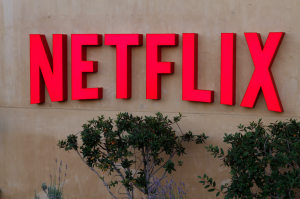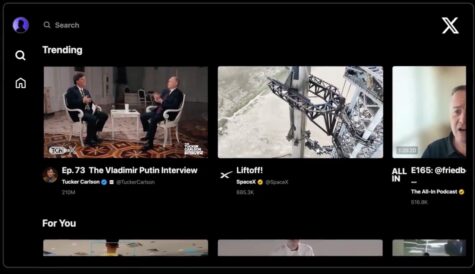Netflix turns the page

Adieu then to Reed Hastings, who is handing the baton of leading Netflix’s quarterly earnings to new co-CEOs Ted Sarandos and Greg Peters.
Netflix’s unexpected surge in subscriber additions for the final quarter of 2022 has allowed Hastings to exit on a high note, and has provided further evidence that this company can never be counted out.
Netflix’s letter to shareholders on the Q4 results spoke of 2022 as “a tough year, with a bumpy start but a brighter finish”.
Nevertheless, there was little sign of triumphalism despite the addition of 7.7 million subs against forecasts of 4.6 million. Keen to manage expectations, Netflix’s letter highlighted the likelihood of slower growth in the first quarter of 2023, with the wider rollout of its ‘paid sharing’ initiative to combat password sharing likely to contribute to increased churn.
Netflix is of course now emphasising revenue rather than subscriber growth as its ‘key metric’, along with operating profit. Hence the big emphasis on its ad-supported tier and on combatting password sharing.
Regarding Netflix’s recently launched ad-supported tier, Basic with Ads, the company’s leadership has been somewhat wary of overpromising, for good reasons. Building an advertising business takes a lot of work and is only likely to pay off in the long term, probably with more of those ‘bumps’ on the way. Research outfit Kantar this week warned that the ad business had gotten off to a “slow start”. That reiterated an earlier analysis by US research outfit Antenna.
On Netflix’s investor call, newly appointed co-CEO Greg Peters said that the ad drive was still at a “ridiculously early” stage, but claimed that ad-tier users seem to be “sort of similar” in their engagement with the service as premium subscribers, with little sign of cannibalisation of higher tiers.
Nevertheless, Peters admitted that Netflix had “a lot to do” to improve targeting and the ad sale proposition.
CFO Spence Neumann meanwhile said that Netflix would not have gotten into the ad business if it did not believe it could generate, at a minimum, 10% of the company’s revenue in the future “and hopefully much more over time”.
It may be said that 10% of the business seems quite modest as an aspiration. Netflix – and Hastings in particular – have been bullish about the future of streaming in general, often predicting the imminent death of linear TV as consumers switch to on-demand streaming. Given the supposed potential of addressable advertising to transform that business, why not set your sites higher? Digital TV Europe’s research sister outfit Omdia has been more bullish on prospects for the ad business, predicting that 60% of Netflix subs will take the ad-supported tier by 2027.
Prompted by Hastings on the investor call, Neumann compared Netflix with Hulu, for which he estimated ad-tier customers to account for about half of its business. Tellingly, however, he also observed that Hulu’s ad business as “US-only” giving it “lower reach” than Netflix.
One possible riposte to that is that, unlike streaming, the ad business remains resolutely local in nature. Netflix, as co-CEO Sarandos himself observed, still only accounts for about 8% of TV time even in the US, and streaming is still, for all the hoopla around it, still a minority pursuit globally. The advertising business still looks for reach to deliver value to advertisers, so traditional broadcasters still have a massive advantage in attracting advertisers.
While there is probably a significant tranche of subscribers who think ads in exchange for a cheaper price point is an attractive trade-off, this is still a minority of the minority who spend most of their viewing time watching streaming content in the first place.
And for all the much-discussed attractions of Netflix’s subscriber base as a highly appealing demographic for advertisers, those who want to pay less for the streaming service are most likely also those less inclined to spend a lot of money on the goods advertisers are trying to sell to them.
Password-sharing challenge
Challenges in the advertising world aside, Netflix also faces an increasingly competitive landscape, even if the streaming universe as a whole has room for expansion. This explains a growing emphasis on initiatives such as tackling account sharing, which will be a key priority for the company over the coming year.
Netflix by its own account suffers more than most streamers from password sharing. It estimates that over 100 million households globally are sharing their credentials. Tackling this through initiatives such as allowing customers to transfer profiles to new accounts and giving people the option to pay extra to share with those they don’t live with is a key focus but one fraught with risk, as identified this week by Spanish research firm Barlovento Comunicación.
Netflix’s leadership know that a significant number of users are likely to drop out, which could also have a knock-on negative impact on the streamer’s attractiveness to advertisers.
Other than ads and account sharing, Netflix is staying with its tried and trusted emphasis on delivering enough compelling new content to keep subscribers joining and coming back month on month for more. It is continuing to dabble in games and live events, such as its recent Chris Rock special, but is staying clear of sports. Sarandos, during the earnings call, reiterated that “we haven’t been able to figure out how to deliver profit in renting big league sports in our subscription model”. He also batted away a question on monetising back-catalogue content via FAST (“We’ve got a lot on our plate this year”).
That means that delivering appealing original content time and again will remain crucial, including continuing to provide content that appeals to specific geographical markets (but which ideally has a wider international appeal). An expensive business. For Netflix, the trick will be to build on its expertise with data to hone its catalogue to what works, optimising its spend to maximise the return on everything it commissions or acquires and retains rights for.



